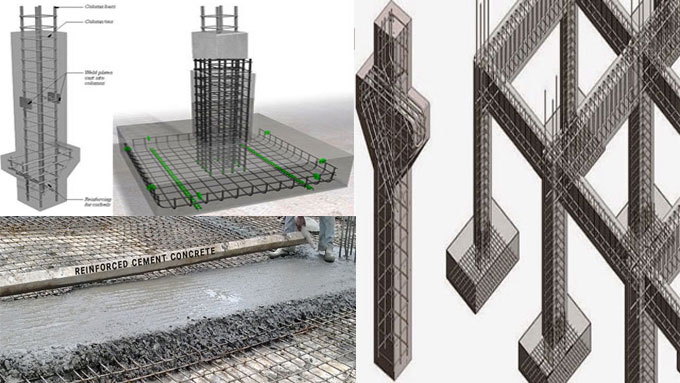
Understanding Reinforced Cement Concrete (RCC)

Reinforced Cement Concrete (RCC) is a composite building material consisting of structural concrete reinforced with a reinforcing material like steel. Steel, due to its ancillary properties is vividly utilized as to add value to your Cement concrete, this phenomenon is known as steel reinforced cement concrete or simply Reinforced Cement Concrete.
Steel bars used in concrete are called as ?reinforcing bars. Used in two major grades, mild steel and high yield strength steel, while the steel fabric made from cold drawn steel wires welded to form a mesh are also used as reinforcement in RCC. Fiber reinforced concrete is also famed for their use in the same context.
Concrete: Structural concrete is a commonly used construction component, used at a rate of one ton for every individual. Concrete is a critical building material that can be molded into different shapes using suitable formwork.
Heterogeneous mixture of cement, sand, coarse aggregate (boulders or gravels) and water that solidifies into a strong mass leading to the hydration of Cement, are critical components, make the final product called Concrete. Except them, huge no. of additives namely admixtures are poured to enhance the properties of concrete known as efficiency, lasting, time of setting etc.
Is Concrete better than Reinforced Concrete?
Simple concrete is hard in compression, but it is weak in bending. So weak, that its tensile strength is a one tenth of its compressive strength. Such simple concrete member is subjected to bending which has cracks and ruptures.
This makes it unfit where bending action can occur. Tensile strength is the ability to avoid bending forces, leading to tensile stresses in flexural members. Plain concrete stiffens with steel has a hundred times stronger to concrete in tension, the overall capacity of plain concrete in bending is enhanced.
The steel bars compensate the concrete?s incapability for tensile resistance, utilizing the tension, acting monolithically with concrete. So, when concrete and steel bars combine to act against forces result in good strength as a human?s bones strengthens flesh.
A simply supported beam carries evenly distributed load over the whole span. This mode of deflection primarily occurs is bending. As a result, there will be stress the beat the bottom part. Since, concrete is weak in tension reinforcing bars will be provided in the lower portion of the beams to avoid cracking of concrete in tension zone.
All Uses of Reinforced Concrete
It?s used for structural members subject to bending. Building component- beam, columns, slabs, shear walls and Foundations to heavy structures like bridge piers, girders and dams are constructed with reinforced cement concrete. Reinforced cement concrete can be concreted or precast concrete.
All Benefits of Reinforced Concrete?
Concrete/steel bars: RCC consists of elements with properties of concrete that is strong in compression, good in tension while giving the advantage of both.
Shape Type: Fresh concrete will be in the form of fluid and so it can be poured and casted into any shape. It gives easiness to the engineer to decide the shape of structure based on architectural aspects.
Resistant to fire and weather: RCC with proper cover will withstand to fire for about 3 ? 4 hours. RCC will also survive any type of weather with proper quality control and durability considerations.
Maintenance: After the completion of work low maintenance is needed for concrete structures compared to the other (steel and timber) type of structures.
Availability: Steel and Concrete are a commonly used construction material and so it is easily available to prepare reinforced cement concrete.
Frugality: It is economical compared to the other materials like steel structure.
Power: RC members are good in rigidity due to their stiffness.
Challenges of RCC
Time: Longer period is requisite in this type of construction; RC structures attain its full strength post 28 days. Therefore, it?s a slow process and cannot be used for immediate works. The strength is multiplied with admixtures.
Requires form works: The process of forming involves the construction and removal of formworks. The proper forms must be constructed at the particular size and shape and pouring of concrete is done. After hardening of concrete, the forms are removed. For both the process labors is labor intensive.
Volume change: Concrete changes volume in time due to shrinkage leading to cracking issues if not properly considered in design.


